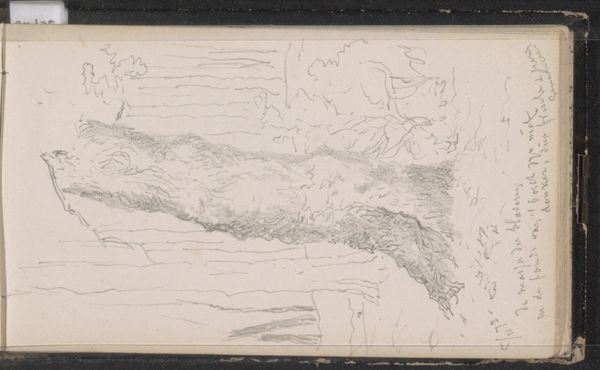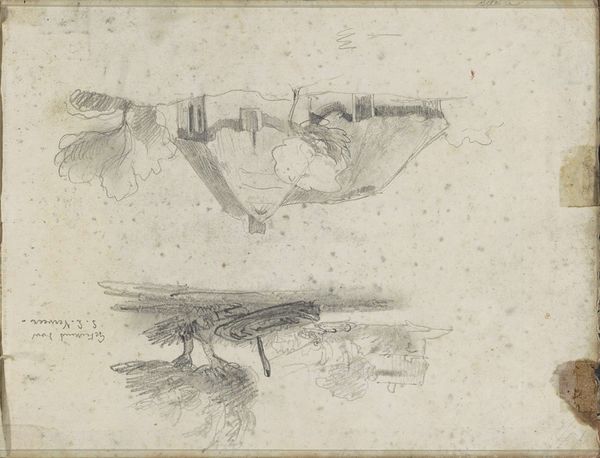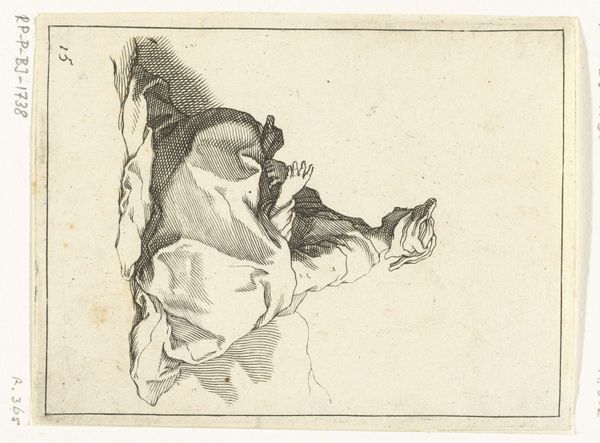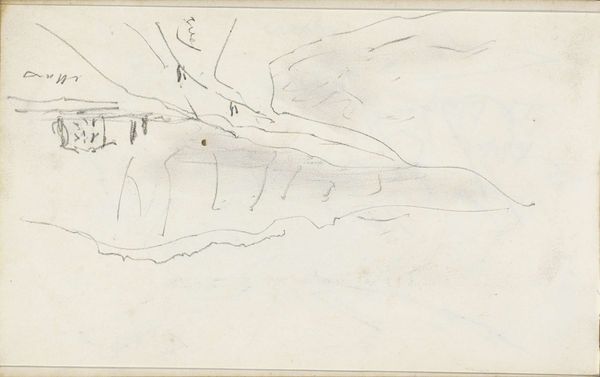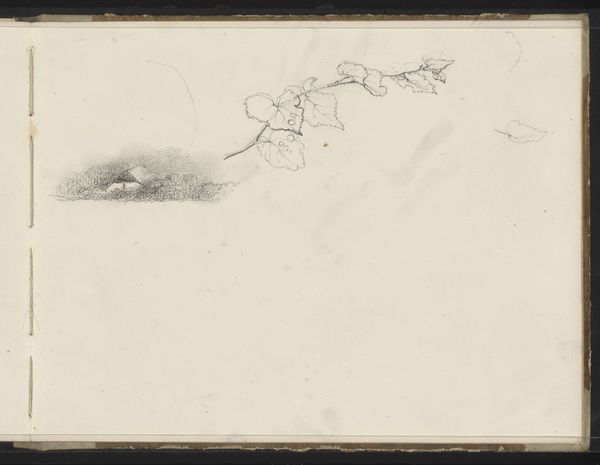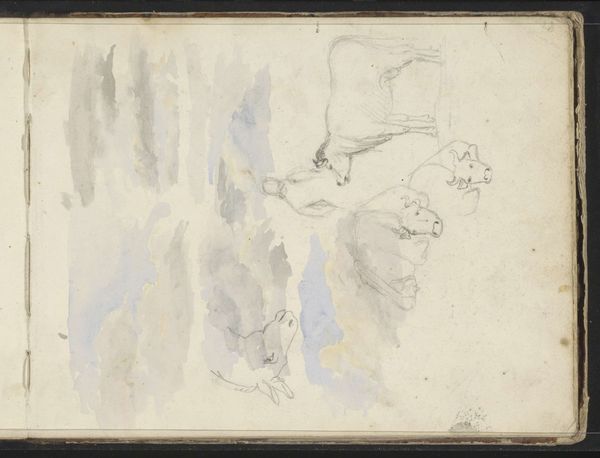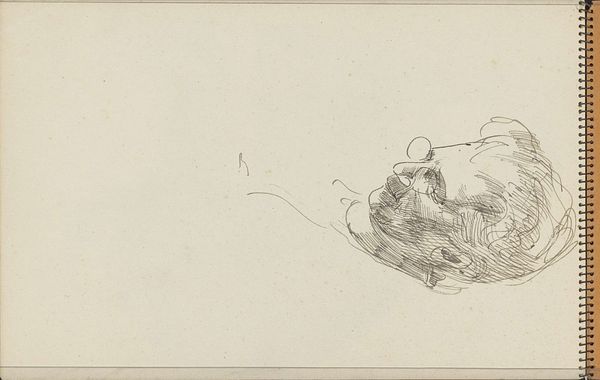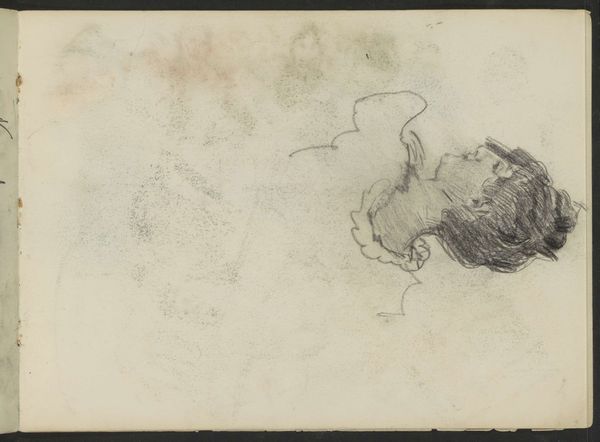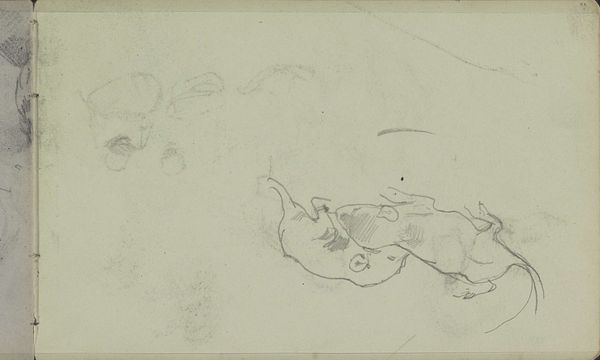
Dimensions: height 100 mm, width 232 mm
Copyright: Rijks Museum: Open Domain
Editor: This drawing, "Jachthond in achtervolging op een haas," or "Hunting Dog Pursuing a Hare," by Johannes Tavenraat, was made between 1840 and 1880, using ink on paper. It has a fleeting quality; you can almost feel the frantic energy of the chase. What stands out to you when you look at this piece? Curator: Immediately, I consider the material realities underpinning this genre scene. The quick, almost frantic application of ink suggests an urgency, mirroring the hunt itself. Think about the paper; its probable cost, its availability, the infrastructure required for its production and distribution. Editor: So you're saying the materials themselves tell a story about access and industry? Curator: Precisely! The act of capturing this hunt wasn't just about artistic skill; it was embedded within a specific economic and social context. A context in which leisure, hunting, and artistic pursuits were entangled with class and industry. We see landscape emerge as commodity. How does that change how you experience the "genre-painting" aspect of the artwork? Editor: That makes me see the seemingly simple sketch as something more complex – a record of labor, leisure, and the economic forces that allowed its creation. It's no longer just a chase; it's a product of its time. Curator: Exactly! And the "romanticism" style could then be read less as a celebration of nature and more as a reflection on mankind's place *within* it. And considering the means, how accessible were hunting and romantic landscape appreciation really? Editor: I see how looking at the materials and their production opens up so many new questions. I'll never look at ink on paper the same way again. Curator: Hopefully you never look at any artwork the same way again. There is always an underbelly to uncover.
Comments
No comments
Be the first to comment and join the conversation on the ultimate creative platform.
